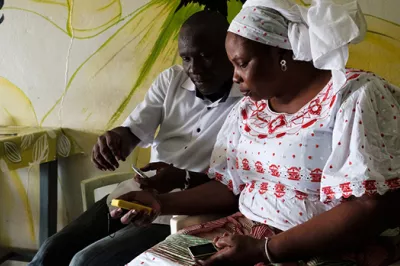Proximity Matters: Improving the Viability of Frontier Agents
The incredible rise of digital financial services (DFS) in the past decade is due in large part to the creation of large, sustainable agent networks. Agents remain the backbone of DFS and serve as the primary means of getting cash in and out of the system. GSMA’s State of the Industry Report reveals that in 2016, 30 markets had 10 times more active agents than bank branches. Moreover, 75 percent of incoming and outgoing transactions are still done in cash, and agents conduct 95 percent of this physical cash-in and cash-out. In other words, even in the most successful DFS markets, customers still transact largely in cash and rely on agents to convert their cash to and from digital currency.
From Mexico to Kenya, a growing body of evidence shows that proximity to access points is vital for financial inclusion. CGAP’s geospatial analytics in Tanzania reveal that households are twice as likely to be active mobile money users if they live within 5 kilometers of a mobile money agent. Despite the tremendous achievements in building agent networks, a significant portion of Tanzania’s population lives in remote, hard-to-serve areas ("frontier areas") where agent viability continues to be a struggle. Although the country has nine times more agent points than schools and health clinics, agent networks cover a far smaller share of the population. This is not a matter of absolute numbers but rather of distribution strategy. Agents are clustered in fewer, more urban areas like Dar es Salaam, Arusha and Mbeya.

This distribution pattern can be observed in many countries, and it makes sense from a provider’s perspective. Businesses are understandably going to acquire agents in areas where viability is easy. Fewer people live in frontier areas. This means that revenues will be challenged by lower transaction volumes and fewer opportunities for indirect revenue. On the flip side, costs are much higher, both in terms of time and actual expenditure. This is particularly true for liquidity management, since frontier agents are likely to be located far from bank branches and other rebalancing points. As a result, business-as-usual expansion is not going to result in deep inroads into frontier areas. Furthermore, even when agents are present in frontier areas, the quality of their services (as measured by presence of liquidity, up-time, etc.) is more likely to be poor.
What’s needed are new models that change the balance of the viability equation to incentivize providers to extend agent networks into frontier areas. Last month, CGAP published a blog post exploring one potential model in which providers could leverage agribusinesses and their extensive delivery platforms in rural areas. A new CGAP deck presents five case studies highlighting approaches by public- and private-sector players in Mexico, India, Tanzania and Brazil that could also improve the viability of frontier agents. In Mexico, the largest corner store retail chain in the country (which is also an agent for 11 banks) uses real-time analytics to increase the efficiency of its store network and agent business. In India, Oxigen uses a tiered deployment model to tailor the start-up and ongoing costs of its 200,000 agents to specific locations and client segments. In Tanzania, Selcom’s shared agents demonstrate the value of aggregation. Also in Tanzania, an off-grid solar company has become a super agent to expand deeper into rural areas. Finally, Brazil has demonstrated the benefits of smart public-sector intervention by achieving 100 percent financial access coverage.
There are 5.3 million agents in 90 countries, and Tanzania’s story is not unique. We know that agent proximity matters and that most new agents are being added to areas that already have access to financial services. The question now is what alternatives to the traditional agent network model will allow providers to reach frontier areas. These five case studies present innovative approaches that have proven effective within specific contexts and could work elsewhere. Tackling this challenge will require that the private sector (start-ups and established providers) and public sector to work together to test and scale solutions that can work for the rural poor.
Supplementary slide decks are available here.



Add new comment